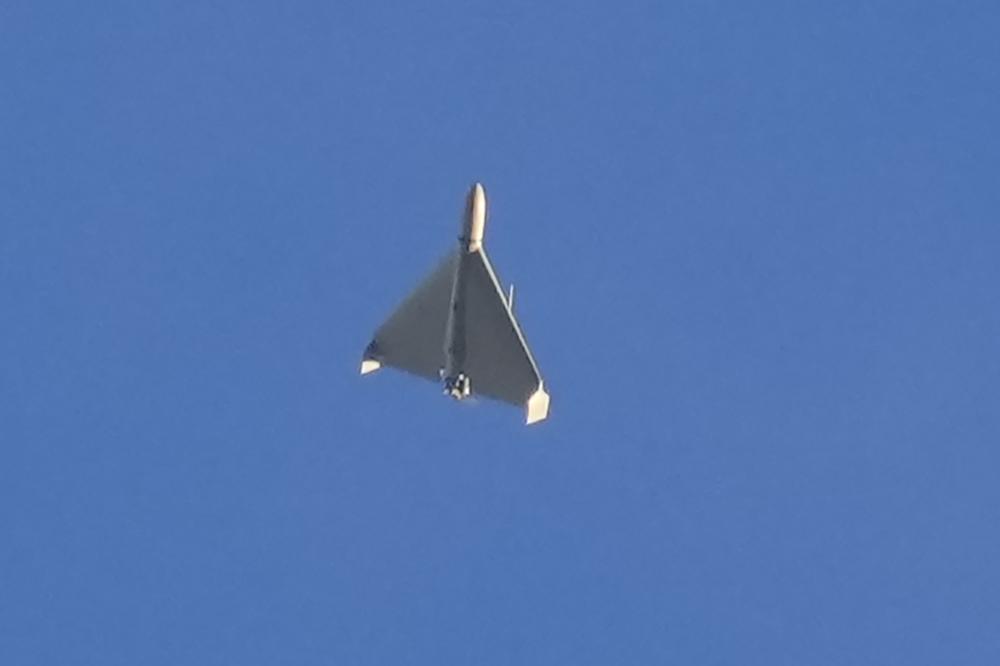The United States and key Western allies accused Russia on Friday of using Iranian drones to attack civilians and power plants in Ukraine in violation of a 2015 U.N. Security Council resolution and international humanitarian law.
Russia countered by accusing Ukraine of attacking infrastructure and civilians for eight years in the eastern separatist regions of Donetsk and Luhansk, which Russian President Vladimir Putin illegally annexed earlier this year.
The U.S., France, Germany and Britain supported Ukraine’s call for U.N. Secretary-General Antonio Guterres to send a team to investigate the origin of the drones.
Russian Ambassador Vassily Nebenzia said the drones are Russian and warned that an investigation would violate the U.N. Charter and seriously affect relations between Russia and the United Nations.
U.S. deputy ambassador Jeffrey DeLaurentis said that “the U.N. must investigate any violations of U.N. Security Council resolutions — and we must not allow Russia or others to impede or threaten the U.N. from carrying out its mandated responsibilities.”
The Western clash with Russia over attacks on civilians and infrastructure and the use of Iranian drones came at an open council meeting that also focused on the dire humanitarian situation in Ukraine as winter approaches. Almost 18 million people, more than 40% of Ukraine’s population, need humanitarian assistance, U.N. humanitarian coordinator Denise Brown says.
U.N. political chief Rosemary DiCarlo expressed grave concern to the council that Russian missile and drone attacks between Oct. 10 and Oct. 18 in cities and towns across Ukraine killed at least 38 Ukrainian civilians, injured at least 117 and destroyed critical energy infrastructure, including power plants.
She cited the Ukrainian government’s announcement that 30% of the country’s energy facilities have been hit, most notably in the capital Kyiv and in the Dnipropetrovsk, Lviv, Kharkiv and Sumy regions.
“Combined with soaring gas and coal prices, the deprivation caused by these attacks threatens to expose millions of civilians to extreme hardship and even life-endangering conditions this winter,” she said.
DiCarlo, the U.N. undersecretary-general for political and peacebuilding affairs, said that “under international humanitarian law, attacks targeting civilians and civilian infrastructure are prohibited.” So are “attacks against military objectives that may be expected to cause harm to civilians that would be excessive in relation to the concrete and direct military advantage anticipated,” she said.
Nebenzia claimed that high-precision missile strikes and Russian drones — not Iranian drones — hit a large number of military targets that included infrastructure in an effort to degrade Ukrainian military activities.
“Of course, this did not sit well with the West and they became hysterical, and this is what we’re witnessing loudly and clearly today at the meeting,” the Russian ambassador said.
He said the West doesn’t want “to face facts” and acknowledge that civilian infrastructure was hit only in cases where drones had to change course because of Ukrainian defense actions. He said Ukrainian air defenses also hit civilian sites because they missed incoming attacks.
In a letter to the Security Council on Wednesday, Ukrainian Ambassador Sergiy Kyslytsya accused Iran of violating a Security Council ban on the transfer of drones capable of flying 300 kilometers (about 185 miles).
That provision was part of Resolution 2231, which endorsed the 2015 nuclear deal between Iran and six key nations — the U.S., Russia, China, Britain, France and Germany — aimed at curbing Tehran’s nuclear activities and preventing the country from developing a nuclear weapon.
U.S. President Donald Trump withdrew the U.S. from the 2015 nuclear agreement in 2018 and negotiations between the Biden administration and Iran for the United States to rejoin the deal have stalled.
Under the resolution, a conventional arms embargo on Iran was in place until October 2020. But restrictions on missiles and related technologies run until October 2023, and Western diplomats say that includes the export and purchase of advanced military systems such as drones, which are also known as unmanned aerial vehicles, or UAVs.
Iranian Ambassador Amir Saeid Iravani said Wednesday that he “categorically rejected unfounded and unsubstantiated claims that Iran has transferred UAVs for the use (in) the conflict in Ukraine.” He accused unnamed countries of trying to launch a disinformation campaign to “wrongly establish a link” with the U.N. resolution.
“Moreover, Iran is of the firm belief that none of its arms exports, including UAVs, to any country” violate Resolution 2231, he added.
France, Germany and Britain on Friday supported Ukraine’s accusation that Iranian has supplies drones to Russia in violation of the 2015 resolution and they are being used in attacks on civilians and power plants in Ukraine. They backed Kyiv’s call for a U.N. investigation.
The three European countries said in a joint letter to the 15 council members that reports in open sources suggest Iran intends to transfer more drones to Russia along with ballistic missiles.
Neither Iran nor Russia sought advance approval from the council for the transfer of Mohajer and Shahed UAVs and therefore “have violated resolution 2231,” the letter said.
The U.S. sent a similar letter, saying Iranian drones were transferred to Russia in late August and requesting the U.N. Secretariat team responsible for monitoring the resolution’s implementation to “conduct a technical and impartial investigation that assesses the type of UAV’s involved in these transfers.”
Nebenzia also sent a letter contending that DiCarlo is siding with the West on carrying out an investigation. His letter insists that “the U.N. Secretariat has no authority to conduct, or in any other form engage, in any `investigation’” related to Resolution 2231.
(AP)











